How Many Eggs Do Indio Gigante Chickens Lay?
When it comes to poultry farming or raising backyard chickens, one of the most common questions that arise is, “How many eggs do Indio Gigante chickens lay?” Indio Gigante chickens, with their imposing size and distinct characteristics, have gained popularity among chicken enthusiasts and farmers alike. In this article, we’ll delve into the fascinating world of Indio Gigante chickens and explore the factors that influence their egg-laying capacity. So, if you’re curious about these magnificent birds and their egg production, read on!
Indio Gigante Chickens: An Overview
Indio Gigante chickens, often referred to as the “Giant Indian” breed, originated in Brazil. These chickens are known for their impressive stature, standing tall and proud as one of the largest chicken breeds in the world. Their unique appearance, with long legs, strong bones, and striking plumage, sets them apart from other poultry breeds.
Imagine a chicken breed so majestic that it can easily be mistaken for a small ostrich. That’s the Indio Gigante! With their commanding presence, they’ve become a favorite among those who appreciate not only their size but also their egg-laying capabilities.
Characteristics and Physical Traits of Indio Gigante Chickens
Indio Gigante chickens are known for their distinctive characteristics:
- Size: These birds are giants, with roosters reaching heights of up to 36 inches and hens slightly smaller, around 28 inches.
- Feather Colors: They come in a variety of colors, including white, black, and red.
- Legs: Indio Gigante chickens have long, sturdy legs that allow them to move gracefully despite their size.
Example: Picture a regal rooster, proudly strutting around the coop, with its striking plumage catching the sunlight. These chickens are truly a sight to behold!
Factors Influencing Egg Production
Understanding the factors that affect egg production in Indio Gigante chickens is crucial for those looking to maximize their egg yield.
Just like a well-tuned orchestra needs different instruments playing in harmony to create beautiful music, Indio Gigante chickens require the perfect blend of factors to produce a symphony of eggs.
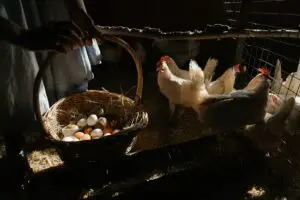

Genetic Factors and Breeding Practices
The genetics of your flock play a pivotal role in determining egg production. Choosing healthy breeding stock with strong genetic traits can significantly impact the number of eggs your chickens lay.
Think of it as a genetic lottery. If you pick breeding stock with a history of prolific egg-laying, you’re stacking the odds in your favor for a bumper crop of eggs.
Environmental Factors
Environmental conditions, such as climate, housing, and habitat, can greatly influence egg production. These chickens thrive in warm climates, so ensuring they have a comfortable living environment is essential.
Imagine you’re more productive on a sunny, warm day rather than a cold, rainy one. Chickens are similar; they lay more eggs when they’re comfortable in their coop.
Nutrition and Feeding Requirements
A well-balanced diet is essential for optimal egg production. Indio Gigante chickens require a diet rich in protein, vitamins, and minerals. Providing them with high-quality feed is a key factor in boosting egg-laying capabilities.
Consider your own health; when you eat nutritious meals, you feel better and can perform better at work or in daily life. Chickens are no different. Nutrient-rich food keeps them healthy and laying eggs at their best.
Health and Wellness
Keeping your chickens healthy is paramount. Regular check-ups, vaccinations, and proper care can prevent diseases and ensure your flock is in the best condition for egg production.
Think of your chickens’ health like maintaining a car. Regular check-ups and maintenance keep the engine running smoothly. In this case, the “engine” is your chickens’ egg-laying prowess.
Egg Production Lifecycle of Indio Gigante Chickens
Understanding the stages of egg production in Indio Gigante chickens is vital for managing your flock effectively.
Just as a gardener understands the life cycle of a plant, a chicken keeper needs to grasp the stages of egg production to ensure a steady supply of fresh eggs.
Chick to Pullet: Growth and Development Stages
Chicks grow rapidly, and it’s essential to monitor their development. They transition from chicks to pullets, and during this phase, their bodies prepare for egg production.
Imagine watching a baby chick transform into a fully grown pullet. It’s like witnessing a caterpillar turning into a beautiful butterfly, ready to lay eggs.
Pullet to Laying Hen: Transition Period and Signs of Readiness
As pullets mature, they start showing signs of readiness to lay eggs. These signs include squatting, comb development, and increased vocalization.
Think of a young girl going through puberty; her body changes, and she matures. Similarly, pullets go through changes that signal they’re ready to start laying eggs.
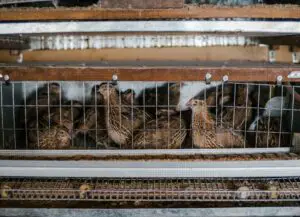

Peak Egg Production Phase
Indio Gigante chickens typically reach their peak egg production phase at around 6-8 months of age. During this time, you can expect a higher daily egg output from your hens.
This is like a sprinter hitting their peak performance during a race. The hens are in their prime, laying eggs consistently and at their highest rate.
Factors Affecting the Duration of Peak Production
The duration of peak egg production can vary. Genetics, health, and environmental factors can influence how long your chickens maintain high egg-laying rates.
Example: Just as some athletes have longer careers than others, the duration of peak production in your flock depends on various factors. Genetics provide the foundation, but proper care and environment also play crucial roles.
Egg-Laying Frequency
Now, let’s address the pressing question: “How many eggs do Indio Gigante chickens lay?”
It’s like the anticipation of waiting for your favorite TV show to air its next episode. You’re eager to know how often these chickens produce those coveted eggs.
Average Daily Egg Production per Hen
On average, a healthy Indio Gigante hen can lay approximately 250 to 280 eggs per year. This translates to roughly 5 to 6 eggs per week. However, individual variations may occur.
Imagine having a chicken that’s your personal egg-laying superstar. With this breed, you can expect them to lay almost an egg a day, making them a valuable addition to your flock.
Seasonal Variations in Egg Production
Egg production can be influenced by the seasons. Chickens tend to lay more eggs in spring and summer when daylight hours are longer and the weather is warmer.
Think of your chickens as creatures of habit. Just like you might be more active in the summer, they prefer laying more eggs during the warmer months when they have more daylight to work with.
Factors Affecting the Frequency of Egg-Laying
Several factors can impact the frequency of egg-laying, including age, diet, stress, and environmental conditions. Ensuring your chickens are well-cared for can help maintain consistent egg production.
Chickens are sensitive souls. Just like you might have trouble focusing at work when you’re stressed, chickens may lay fewer eggs if they’re stressed or not receiving the right care.
Egg Size, Color, and Quality
Let’s dive into the characteristics of Indio Gigante chicken eggs.
Imagine opening your coop’s nesting boxes and discovering a treasure trove of eggs. These eggs are not only a source of sustenance but also a work of art, each with its own unique qualities.
Characteristics of Indio Gigante Chicken Eggs
Indio Gigante eggs are typically large and brown in color. They have thick shells and rich, flavorful yolks.
These eggs are like golden nuggets in the chicken world. They’re bigger, heartier, and bursting with flavor compared to ordinary eggs.
Factors Influencing Egg Size and Color
The genetics of your chickens and their diet can affect the size and color of their eggs. Providing the right nutrients is key to producing high-quality eggs.
It’s similar to how your diet affects your complexion and overall health. Feed your chickens well, and they’ll reward you with eggs that are not only large but also deeply colored and nutritious.
Measures to Improve Egg Quality
To enhance the quality of the eggs your Indio Gigante chickens produce, ensure they have access to clean water, a well-balanced diet, and a stress-free environment.
Just as you’d feel your best after a good night’s sleep and a wholesome meal, your chickens need the right conditions to lay top-quality eggs consistently.
Managing Indio Gigante Chickens for Optimal Egg Production
Achieving high egg production rates requires proper management practices.
Managing Indio Gigante chickens is like conducting an orchestra. You need to coordinate various elements to ensure a harmonious outcome – in this case, a bounty of eggs.
Choosing the Right Breeding Stock
Selecting healthy and robust breeding stock is the foundation for successful egg production.
It’s akin to assembling a team of talented athletes for a championship game. Picking the best players ensures a winning season, or in this case, a season of plentiful eggs.
Providing a Suitable Environment and Housing
Create a comfortable living space for your chickens, ensuring they have adequate shelter, space, and protection from predators.
Imagine your chickens’ coop as their castle. A well-maintained, predator-proof castle ensures their safety and contentment, leading to consistent egg production.
Implementing a Balanced Nutrition Plan
Consult with a poultry nutrition expert to develop a feeding plan tailored to your Indio Gigante chickens’ needs.
Think of it as having a personal chef who prepares gourmet meals tailored to your specific tastes and dietary requirements. Your chickens deserve nothing less!
Routine Health Care and Disease Prevention
Schedule regular check-ups and vaccinations to keep your flock healthy and prevent disease outbreaks.
Just as you’d schedule regular health check-ups and vaccinations for your pets or children, your chickens deserve the same level of care to thrive and produce eggs.
Best Practices for Egg Collection and Storage
Collect eggs daily to maintain freshness. Store them in a cool, dry place to extend their shelf life.
It’s like a treasure hunt every morning. Gathering freshly laid eggs is not only rewarding but also ensures they’re at their peak freshness.
Common Challenges in Indio Gigante Chicken Egg Production
Despite your best efforts, challenges may arise.
Life with chickens is full of surprises, much like a rollercoaster ride. There are ups and downs, but with knowledge and perseverance, you can overcome challenges.
Dealing with Low Egg Production
If your hens are laying fewer eggs than expected, investigate potential causes, such as health issues or dietary deficiencies.
Think of it as troubleshooting a problem in the workplace. When production is down, you need to identify the issues and find solutions to boost output.
Addressing Egg-Laying-Related Health Issues
Monitor your chickens for any signs of reproductive problems or egg-laying complications, and seek veterinary assistance when necessary.
Imagine your chickens are like athletes with minor injuries. They may need specialized care and treatment to get back in the game – in this case, laying eggs.
Overcoming Seasonal Fluctuations
Seasonal changes can affect egg production. Be prepared for fluctuations and adjust your management practices accordingly.
Seasonal variations are like the changing seasons in your life. Each comes with its own challenges and joys, and adapting to them is key to maintaining egg production.
Solutions for Managing Excessive Egg Production
On the flip side, if you have too many eggs to handle, consider selling them or exploring egg preservation methods.
It’s like suddenly having an abundance of a good thing. You can share the surplus with neighbors and friends or preserve the eggs for future use.
Maximizing Egg Production for Personal or Commercial Use
Whether you’re a backyard enthusiast or a commercial farmer, maximizing egg production is essential.
Think of it as managing a business. You need a plan, whether you’re running a small, cozy café or a bustling restaurant chain. In this case, your “product” is the eggs.
Strategies for Backyard Poultry Enthusiasts
If you’re raising Indio Gigante chickens for personal use, focus on their well-being and enjoy the fresh eggs they provide.
It’s like having a beautiful garden in your backyard. You tend to it with care, and in return, it yields bountiful, fresh produce.
Scaling Up for Commercial Egg Production
For commercial purposes, scale up your operation while maintaining strict standards for hygiene, health, and egg quality.
Scaling up is like expanding your small bakery into a full-fledged pastry shop. The demand is higher, but so are the rewards when you maintain quality.
Economic Considerations and Profitability
Calculate the costs and potential profits of your egg production venture to ensure it’s financially viable.
Picture yourself as a savvy entrepreneur. You crunch the numbers and make informed decisions to ensure your venture not only sustains itself but also thrives.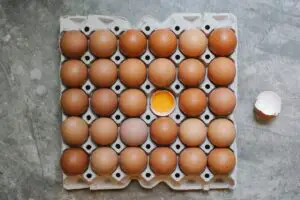

Conclusion
In conclusion, Indio Gigante chickens are not only remarkable in size and appearance but also as egg layers. Understanding the factors that influence their egg production can help you make informed decisions about raising these magnificent birds. So, whether you’re a novice poultry keeper or a seasoned farmer, you can now confidently answer the question, “How many eggs do Indio Gigante chickens lay?” And remember, providing the best care and management for your flock is the key to a successful and rewarding chicken-keeping experience.
Happy chicken raising!


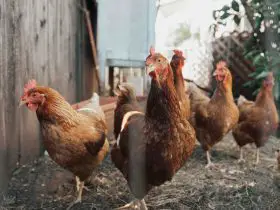

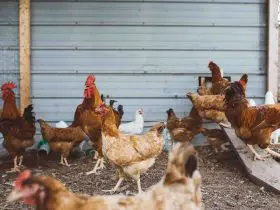


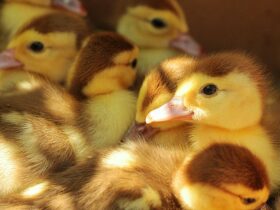
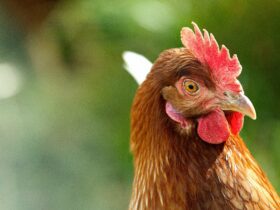



Hello!! Welcome to Anim Farm